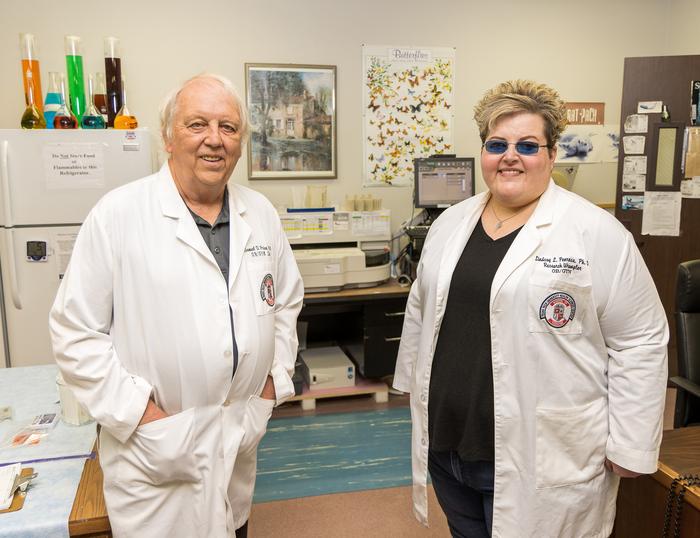New Specimen Collection System Enhances Assisted Reproductive Technologies
Considered an experimental procedure during the late 1970s when it made headlines with each birth it produced, in vitro fertilization (IVF) has helped many couples overcome infertility issues for more than four decades. In several nations, IVF is responsible for up to 3% of the babies born.
The procedure, now a cornerstone of infertility treatments, has expanded to include other assisted reproductive technologies (ARTs). One of those ARTs, known as intracytoplasmic sperm injection (ICSI), involves using a microscopic needle to inject a single sperm into an egg.
Though viewed as an almost universal means for egg insemination, ICSI does have limitations. It requires expensive equipment and well-trained individuals. And while many other technologies for selecting viable eggs have been developed over the past few years, there remain few options for selecting healthy sperm beyond assessing their movement and morphology (structure).
In an ongoing effort to improve healthy sperm selection, Samuel Prien, Ph.D., and Lindsay Penrose, Ph.D., from the Department of Obstetrics and Gynecology at the Texas Tech University Health Sciences Center (TTUHSC) School of Medicine have worked for years to develop a specimen collection cup that creates a more favorable environment for sperm.
In 2022, they received a patent (“Method and Apparatus for Collection of Fluid Samples”) to produce a second-generation collection cup that made important improvements to the first such patented device invented at TTUHSC several years prior by Prien and Dustie Johnson, Ph.D. That second-generation device, known as the DISC (Device for Improved Semen Collection), is marketed today by Reproductive Solutions under the brand name ProteX.
In their latest study (“A Simple One-Step System Enhances the Availability of High-Quality Sperm for Assisted Reproductive Procedures”) that was published Oct. 10 by the Open Journal of Obstetrics and Gynecology, Prien and Penrose provided preliminary results of their latest collection technology system design, which provides a simple, one-step method of sperm selection for ICSI which also may prove useful for conventional IVF and IUI (intrauterine insemination).
The system, defined as the sperm isolation device that uses a barrier mesh between fluids, is known commercially as the NovaSort and also is marketed by Reproductive Solutions. The basket-like device was designed to work in any properly shaped holding vessel, but ideally in tandem with the ProteX collection cup.
“This new design allows us to process the sample and very simply recover mobile sperm,” Prien said. “In a one-step process, we put the little basket in, we wait the appropriate amount of time and then we have mobile sperm which have not been through the rigors of all the other ways we process sperm right now, such as with centrifuges and different kinds of gradients that can damage the DNA. We can isolate the sperm without ever having exposed them to anything that might damage them.”
Prien said the NovaSort is designed to prevent the mixing of seminal fluid and media while allowing the motile (moving) sperm to move out of the seminal fluid and into the media while keeping unwanted debris out. This provides a clean highly motile population of sperm to use in ARTs.
John Smothers, co-founder and executive vice president of Operations and Technology for RSI, said the new system design helps address two issues clinics face in collecting viable samples: chain of custody and time.
“Any potential chain of custody issue goes away because the sample never leaves the collection cup,” Smothers said. “It also provides efficiency because the clinics can conduct the process in about 15 minutes, whereas before it was taking an hour or more. And they complete the process with much healthier sperm, which increases the chances of having healthy pregnancies.”
Prien, Penrose and TTUHSC have filed patent applications for the new system design, which was demonstrated live at the American Society for Reproductive Medicine Scientific Congress and Expo Oct. 14-18 in New Orleans. Penrose said she’s most excited to display the overall efficiency the new system provides to practitioners and the hope it provides patients.
“We’re going to be able to help our lab colleagues be more efficient in their work, and we’re going to be able to help more patients have healthy pregnancies,” Penrose added. “That’s always our goal.”
And while the new system is exciting for RSI from a commercial standpoint, Smothers said it also demonstrates how the successful collaboration between TTUHSC and RSI is helping patients.
“We wouldn’t be at this point if we didn’t have partners like TTUHSC that would collaborate and work with us,” Smothers added. “It makes a huge difference for us, TTUHSC and patients.”
###
Journal
Open Journal of Obstetrics and Gynecology
DOI
10.4236/ojog.2023.1310141
Method of Research
Experimental study
Subject of Research
Human embryos
Article Title
A Simple One-Step System Enhances the Availability of High-Quality Sperm for Assisted Reproductive Procedures
Article Publication Date
10-Oct-2023
COI Statement
This is to acknowledge that SP and LP are inventors of the SID technology and have financial interests in RSI. Further, JL and MV serve on the scientific advi- sory board of RSI.









































